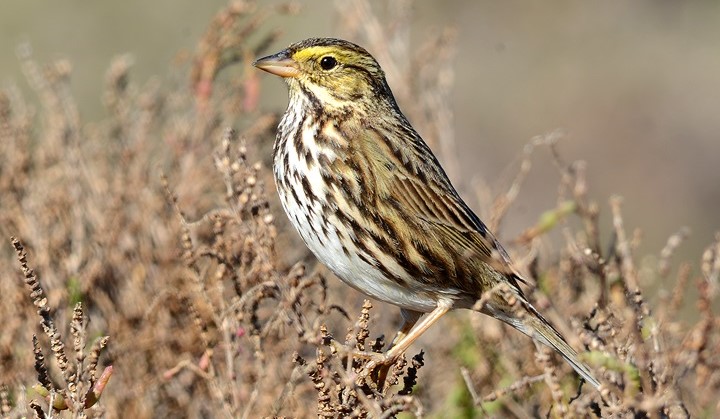 The Santa Ana River Salt Marsh is a feature of the larger Santa Ana River Mainstem Project located in Orange County, CA within the limits of the City of Newport Beach. The 92-acre Marsh site provides habitat mitigation and enhancement areas to offset impacts to degraded wetland habitat from the widening of the adjacent Santa Ana River Channel.
The Santa Ana River Salt Marsh is a feature of the larger Santa Ana River Mainstem Project located in Orange County, CA within the limits of the City of Newport Beach. The 92-acre Marsh site provides habitat mitigation and enhancement areas to offset impacts to degraded wetland habitat from the widening of the adjacent Santa Ana River Channel.
The restoration process reconfigured much of the higher elevations of the site into lower and better draining forms. A Tern Island was constructed to provide habitat for the California least tern (Sterna antillarum browni; hereafter, tern), an endangered species. The goals and objectives of the Marsh restoration are:
- Increase overall ecological productivity and diversity in the Marsh.
- Increase the value of the Marsh as a nursery area for marine fish.
- Increase the general aesthetic qualities of the Marsh while maintaining access to active oil well operations and minimizing the total surface area dedicated to roads.
- Improve California least tern feeding habitat and provide terns with suitably sized fish during critical periods in the breeding season.
- Provide the Huntington Beach tern colony an additional nesting site.
- Provide habitat for the federally endangered light-footed Ridgway’s rail (Rallus obsoletus levipes).
- Provide habitat for the state endangered Belding’s savannah sparrow (Passerculus sandwichensis beldingi).
The decision to purchase and restore the Marsh was made in coordination with numerous agencies, including the California Coastal Commission, the California Department of Fish and Wildlife, the U.S. Fish and Wildlife Service, the National Marine Fisheries Service, and the California Regional Water Quality Control Board (Santa Ana Region; SARWQCB).
Habitat Restoration
The Marsh provides restored habitat for a variety of coastal salt marsh plant and wildlife species, including federal and state threatened and endangered species such as the California least tern, coastal California gnatcatcher (Polioptila californica californica), Belding’s savannah sparrow, and light-footed Ridgway’s rail. Continued management is required for the improvement and maintenance of habitat conditions and to minimize disturbance and degradation.

The Marsh requires tidal inflow and outflow from the Santa Ana River through two tidal gates. Fresh water, or stormwater runoff, enters the Marsh from the adjacent lands to the north, south and east. Water from the Santa Ana River will enter the Marsh until the river rises to 3.5 feet above Mean Sea Level, at which time the tide gates automatically close. The storage capacity of the Marsh is adequate to prevent the water level, from local runoff and precipitation, from rising in excess of 6.0 feet above MSL. As designed, sufficient storage is provided within the Marsh area to prevent flood damage to the adjacent residences during a 0.01 annual exceedance probability event. The AEP is the probability that upland flooding will occur in any given year considering the full range of possible annual floods.